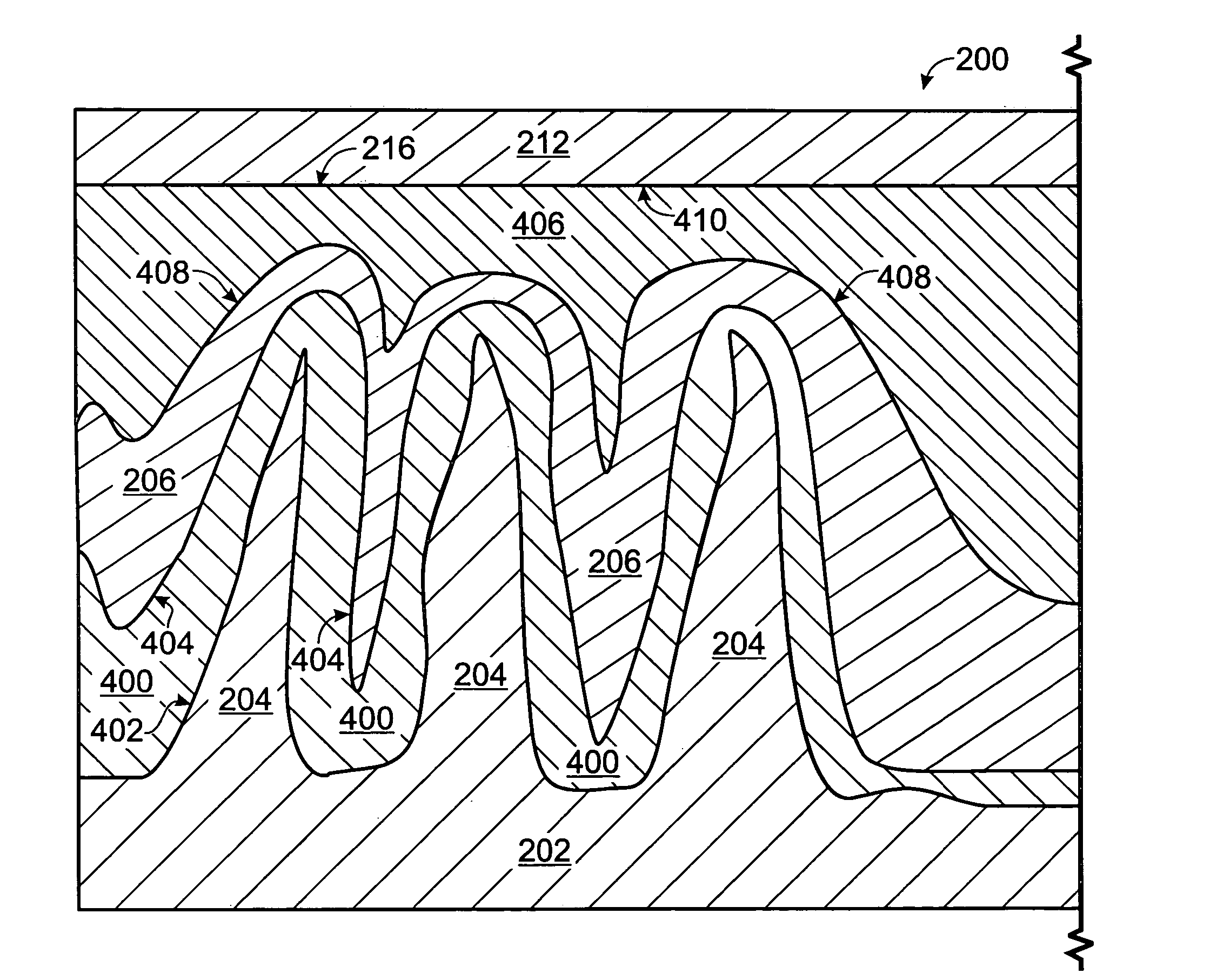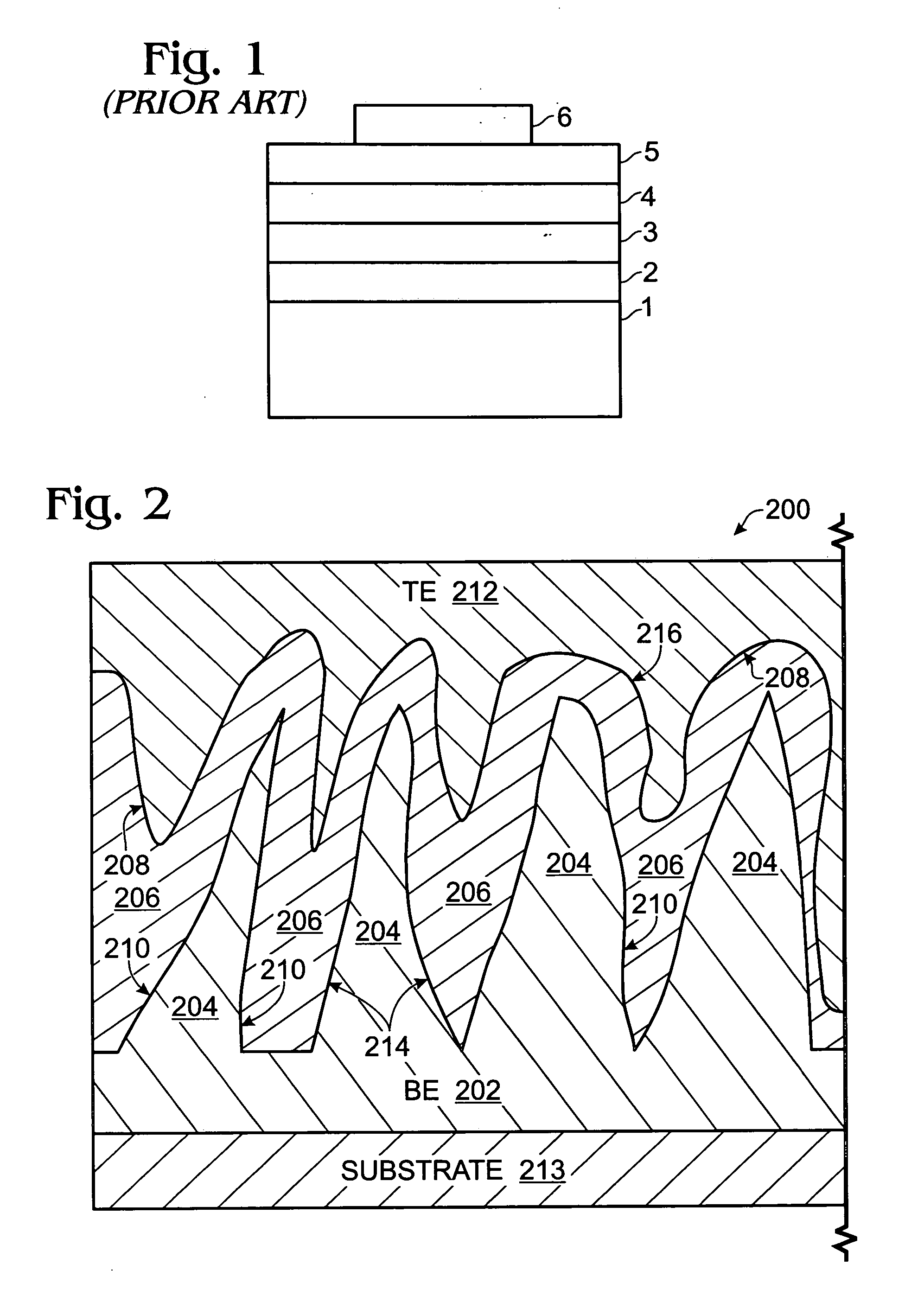Nanotip electrode electroluminescence device with contoured phosphor layer
a phosphor layer and electroluminescence technology, applied in the direction of electrode system manufacturing, electric discharge tube/lamp manufacturing, discharge tube luminescnet screens, etc., can solve the problems of bulk silicon being considered highly inefficient light emitters, poor light generation efficiency, and conventionally unsuitable for optoelectronic applications. , to achieve the effect of increasing the surrounding electric field and enhancing the surface charge density
- Summary
- Abstract
- Description
- Claims
- Application Information
AI Technical Summary
Benefits of technology
Problems solved by technology
Method used
Image
Examples
Embodiment Construction
[0025]FIG. 2 is a partial cross-sectional, detailed view of an electroluminescence (EL) device with a nanotip-contoured phosphor layer. The EL device 200 comprises a bottom electrode (BE) 202 with nanotips 204. A phosphor layer 206 overlies the bottom electrode 202, having an irregularly-shaped top surface 208 and an irregularly-shaped bottom surfaces 210. A top electrode 212 overlies the phosphor layer 206.
[0026] A substrate 213 underlies the bottom electrode 202, made from a material such as silicon, silicon oxide, silicon nitride, glass, quartz, or plastic. In one aspect, the substrate 213, bottom electrode 202, and nanotips 204 are a transparent material, while the top electrode is a non-transparent material. In another aspect, the top electrode 212 is transparent, while the bottom electrode 202 and substrate 213 are non-transparent. In yet another aspect, the substrate 213, bottom electrode 202, and top electrode 212 are all transparent.
[0027] As used herein, the word “nanoti...
PUM
 Login to View More
Login to View More Abstract
Description
Claims
Application Information
 Login to View More
Login to View More - R&D
- Intellectual Property
- Life Sciences
- Materials
- Tech Scout
- Unparalleled Data Quality
- Higher Quality Content
- 60% Fewer Hallucinations
Browse by: Latest US Patents, China's latest patents, Technical Efficacy Thesaurus, Application Domain, Technology Topic, Popular Technical Reports.
© 2025 PatSnap. All rights reserved.Legal|Privacy policy|Modern Slavery Act Transparency Statement|Sitemap|About US| Contact US: help@patsnap.com



